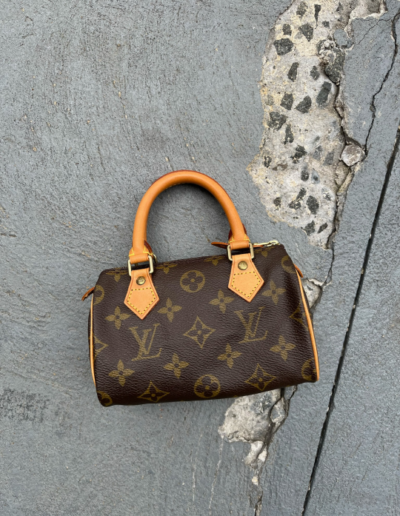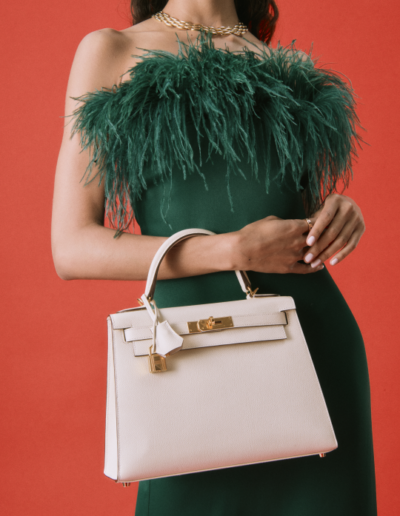DESIGNER 101
Hermès 101: Top 10
Most Popular Leathers
By James F. Dec 1, 2020
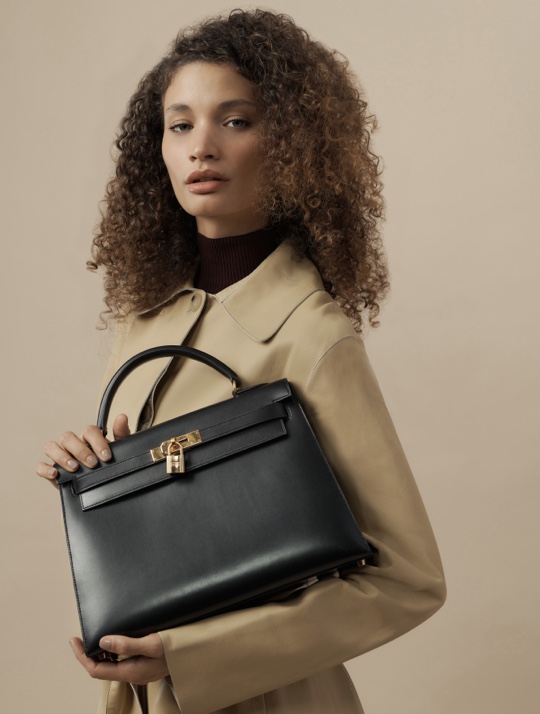
As avid collectors know, Hermès is known for its lengthy
rolodex of materials and leathers that is seemingly endless as they introduce new additions each season. Some of these, however, have reached cult status, becoming the leathers that Hermès is known for throughout the world. Read on to learn about Hermès leathers.
Box Calf Leather
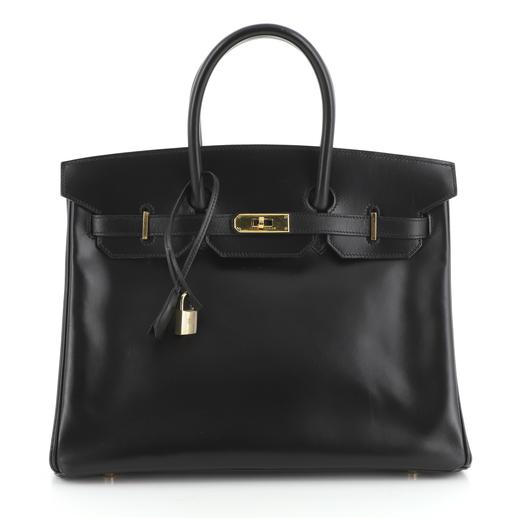
A 35cm Birkin done in Noir Box Calf leather
Perhaps the most iconic of Hermès leather types, Box Calf leather is actually their oldest leather type and it is still in production today. This leather was created in the 1890s and named after famed English shoe craftsman Joseph Box, maker of high-quality luxury footwear for London’s petit bourgeoisie.
Box Calf leather is characterized by its rigid hand, slight sheen, and a subtle “crackled” grain. Box Calf also tends to develop more of a sheen (also called a patina) with age and wear. When this leather becomes scuffed and scratched, the repair process is simply to buff out the marks with a proper polishing tool by a trained craftsman. In this way, while Box Calf leather does tend to show scuffs, they are incredibly easily repaired. While easy to repair, if not properly trained, the craftsman can damage the bag in the repair process so it is important to get this leather repaired by Hermès, or by a repair service you trust.
If you want to identify Box Calf leather in the wild, look for these three qualities: rigid hand, slight sheen, and the subtle “crackling” effect throughout the grain of the bag.
Togo Leather
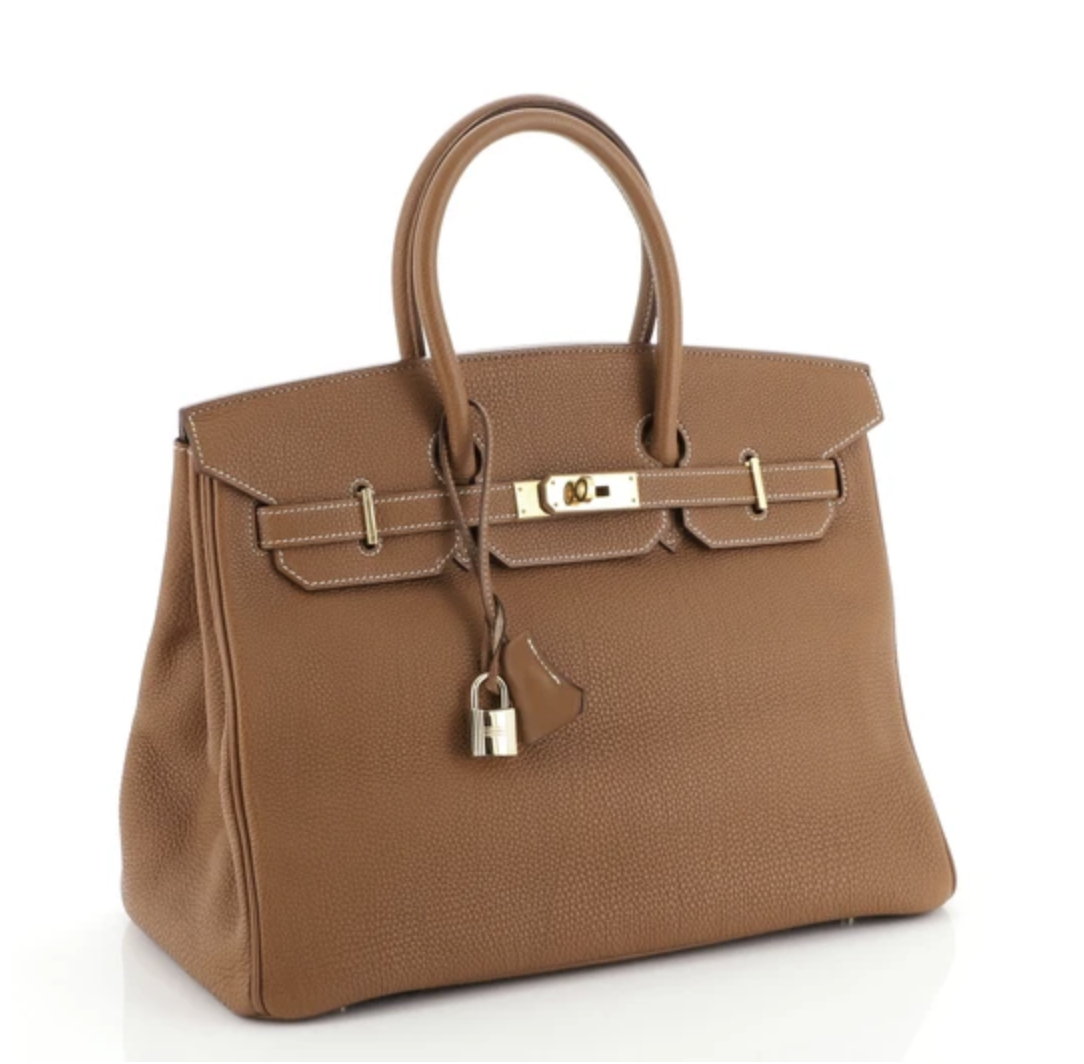
A 35cm Birkin done in Gold Togo leather
Togo leather is arguably the most ubiquitous of Hermès materials, highly sought after for its durability, natural pebbled grain, and suppleness. The most iconic handbags and small leather goods have been fashioned from Togo leather over the years, and it’s sure to continue for years to come. Togo was first introduced at Hermès in 1997 and was named after the Togolese Republic in Africa.
Togo leather is characterized by a supple hand, matte appearance, and an irregular pebbled grain wherein the leather tends to show veins and wrinkles. These veins and wrinkles are completely natural and are actually desirable for the aesthetics of this Hermès leather. Over time, the hand tends to soften and picks up a very slight sheen where wear has occurred.
When identifying Togo leather, look for these three qualities: supple hand, matte general appearance, and the irregular pebbled grain featuring some veining.
Clémence
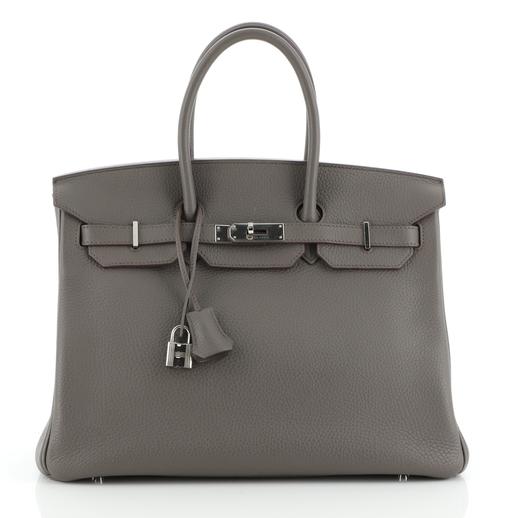
A 35cm Birkin done in Étain Clémence leather
Incredibly similar to Togo, Clémence is another Hermès leather that has reached ubiquity within Hermès handbags. In fact, Clémence and Togo are often mistaken for one another, despite some key differences in how they look and behave. Clémence was introduced into the collections in 1992 and has since become a juggernaut of a material.
Clémence leather is characterized by a supple hand, semi-matte appearance, and an irregular pebbled grain. What distinguishes Clémence from Togo, then, is that Clémence has a slightly wider, flatter grain and does not show veining. Over time, Clémence will become more supple, and pick up a slight sheen where wear occurs.
When identifying Clémence in person or through images, look for these three qualities: supple hand, semi-matte general appearance, and a wide irregular grain without veins.
Epsom Leather
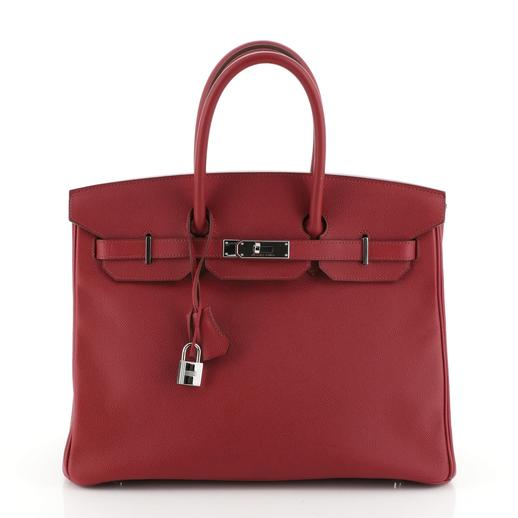
A 35cm Birkin done in Rubis Epsom leather
Epsom leather is perhaps the most extremely durable leather Hermès has created to date. Known widely for this durability, Epsom is also quite structured and tends to show color in a vibrant way compared to other materials. This structure and vibrancy is part of what makes Epsom leather so desirable to own. Epsom leather was added to the collections in 2004 when it replaced the now discontinued Courchevel leather that same year.
Epsom leather is characterized by a rigid hand, a semi-matte appearance, and a pressed cross-hatch grain. This heat-pressed grain is what makes an Epsom leather bag so rigid and extremely durable, is also why this is one of the most common materials for wallets and small travel goods.
Look for these three qualities when identifying an Epsom leather item: rigid hand, semi-matte general appearance, and a pressed cross-hatch fine grain.
Swift
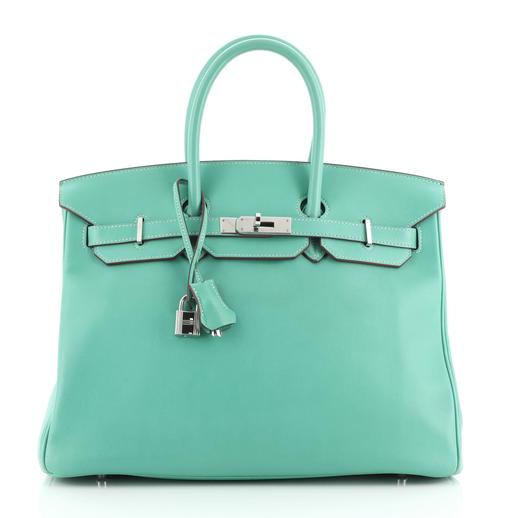
A 35cm Birkin done in Lagon Swift leather
Swift is yet another leather from Hermès with a backstory. Named for the author of “Gulliver’s Travels”, Jonathan Swift, this Hermès leather is commonly found in clutches, small leather goods, and the occasional small handbag. Added to the collections in 2006, Swift replaced Gulliver leather which was discontinued earlier in 1999. To continue this theme, Hermès then introduced Veau Jonathan leather in 2018.
Oddly enough, each of these leathers was introduced and/or discontinued due to the craftsmen who worked with them having retired. Due to the unique craftsmanship behind these leathers, all three are nearly indistinguishable from each other save for their year of production. By far, Swift leather is the most common and sought after of the three.
Swift leather is characterized by a supple and smooth hand, semi-matte appearance, and a smooth natural grain. This tends to be pillowy soft leather, and as such can tend to pick up and display wear more readily than other materials. Swift also tends to soften and show more sheen over time as wear develops.
If you think you have a Swift item on your hands, look for these three qualities: supple and smooth hand, semi-matte appearance, and a smooth natural grain.
Evercolor
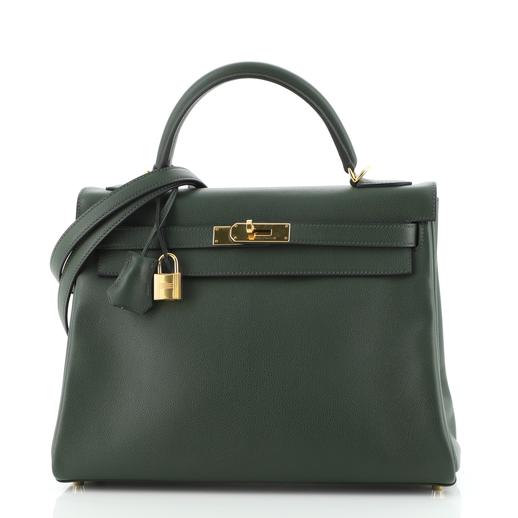
A 35cm Birkin done in Vert Anglais Evercolor leather
A more recent addition to the Hermes leather types, Evercolor is a play on the slightly older Evercalf and Evergrain leathers. The name is derived from the vibrancy and variation of colors that this leather can portray, and this is also how it differs from its cousins, as Evercalf and Evergrain tend to be made in neutral colorways. Evercolor entered the foray in 2012.
Evercolor is characterized by a supple and soft hand, a satin appearance, and a tight and regular grain that is created by pressure printing. Similar to other “pressed” materials, Evercolor maintains a durability similar to that of Epsom; however, Evercolor is much softer and appears more natural. Evercolor is also often compared in appearance to Togo, although Evercolor is pressed grain, where Togo is a natural grain Hermès leather.
If you want to identify Evercolor, look for these three qualities: supple and soft hand, a satin appearance, and a tight, regular grain.
Chèvre Mysore
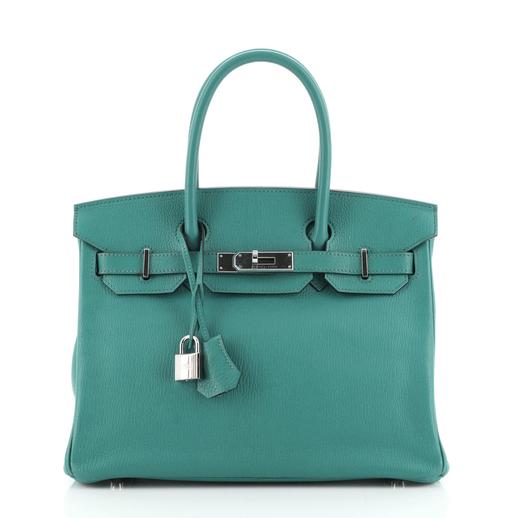
A 35cm Birkin done in Bleu Paon Chèvre Mysore leather
Chèvre Mysore is another classic material that has been used for decades. This leather automatically differs from the others on this list, as it is derived from goatskin sourced from the Karnataka region of India, near the city of Mysore. Chèvre Mysore was introduced in the 1990s, although it is unclear exactly which year.
Chèvre Mysore is characterized by a supple but dry hand, a satin appearance, and a tight caviar-like grain. This material is notable for its “wet” appearance and durability, but is also renowned for its ability to display vibrant color.
Identifying Chèvre Mysore by looking for these three qualities: supple and dry hand, satin general appearance, and that signature tight and caviar-like fine grain.
Agneau
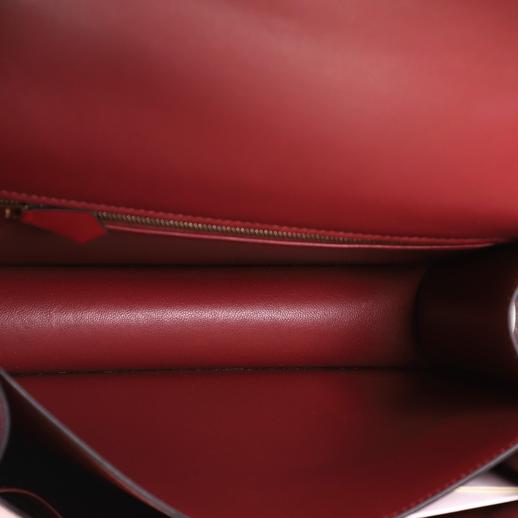
Interior of a 24cm Constance done in Rouge H Agneau leather
While not the most popular leather for handbag exteriors, Agneau is used frequently in handbag linings as well as other categories such as gloves, leather charms, and home items. Notable styles that include Agneau linings are typically the Constance style, the Lindy style, Exotic skin Jige clutches, and many more! French for lambskin, it is not known exactly when Hermès first started using this material, but it is known to have been used throughout most of the 20th and into the 21st century.
Agneau is characterized by a buttery-soft and supple hand, semi-matte appearance, and a “pinhole” effect grain that is distinct to lambskins. This leather also tends to soften and develop a sheen over wear and age
To identify Agneau, look for these three qualities: buttery-soft hand, semi-matte general appearance, and the signature “pinhole” grain.
Vache Hunter
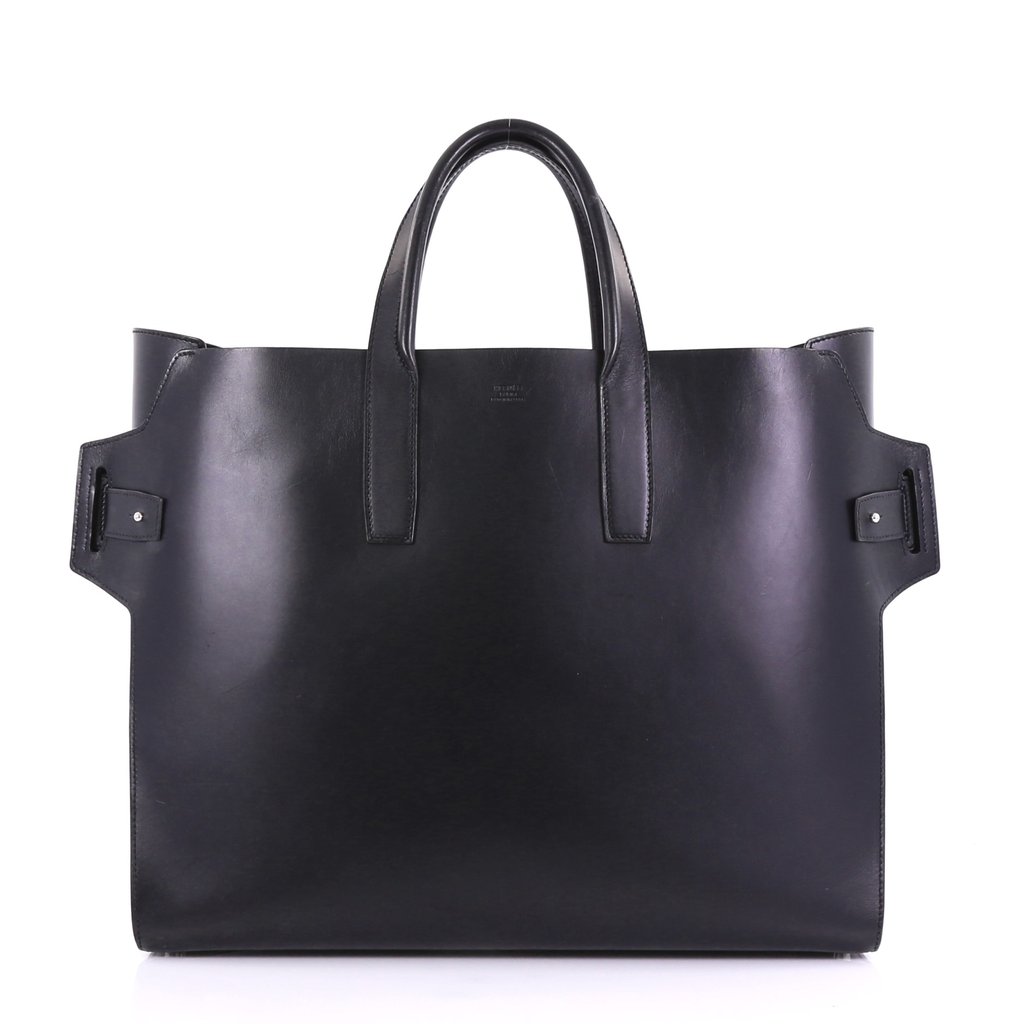
A 45cm Cabacity done in Noir Vache Hunter leather
A common leather used to trim Hermès handbags, Vache Hunter is unique in its durability. This leather can be found most consistently in the Herbag and Etriviere lines; however, it can be seen periodically in other lines as well. While the exact year of introduction is unknown, this leather has been used since the 1990s in Herbags.
Vache Hunter is characterized by a tough and rigid hand, smooth and semi-matte appearance, and a dry, smooth grain. There will also be a rough “raw” leather underside to this material. As it ages, the leather tends to darken, pick up water spots and scuffs, but should hold its structure despite this.
To determine if a leather is Vache Hunter, look for these four qualities: tough and rigid hand, semi-matte general appearance, a dry and smooth grain, as well as a rough “raw” leather underside.
Toile H
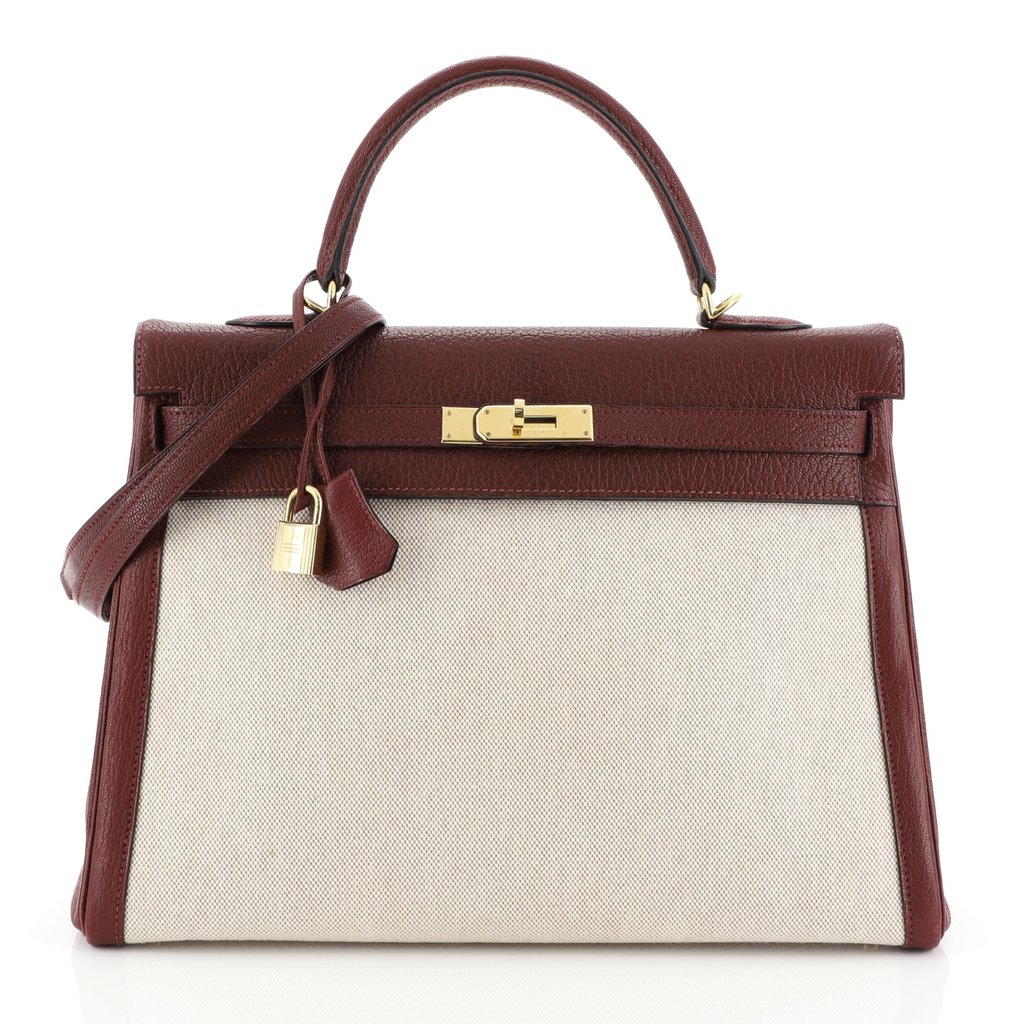
A 35cm Kelly bag done in Ecru Toile H canvas
While not a leather, Toile H is a classic Hermès material that has been in circulation for many decades. While unknown when it was first introduced, Toile H has been used in nearly every line that Hermès has produced, from the Birkin to the Garden Party. It is widely considered to be Hermès premier canvas material.
Toile H is distinguished from other canvas types by a bicolor warp and weft (meaning two different colored cottons are woven together in a grid), creating an H shape that gives this material its name. The most classic of these colors is “Ecru” (raw in French) that combines a natural cotton color with a medium brown shade. Other colorways have been produced but are far more uncommon, including Noir, Bleu Jean, Orange, and more. Aside from color, Toile H also comes in a coated and uncoated variety to afford extra durability if needed.
Toile H is easily identified by looking for the bicolor warp and weft in a bag that includes a canvas element.
Bonus: Chèvre Marocain
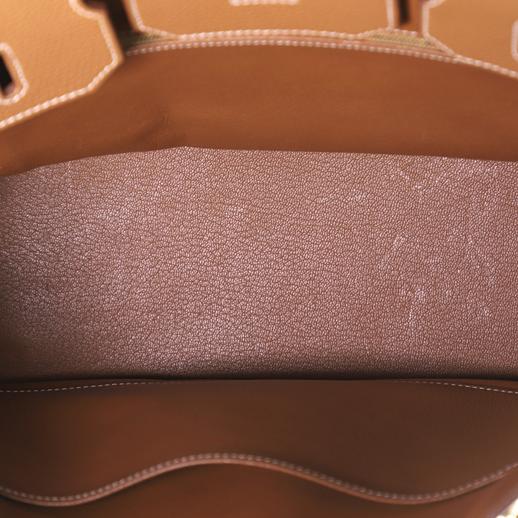
Interior of a 32cm HAC Birkin done in Chèvre Marocain Hermès leather
This little-known fact about Hermès bags may surprise you, is that the goatskin linings of Hermès handbags are actually done in a particular leather from a specific animal. Likely the most popular leather that Hermès uses (although not for the exterior), this material is heralded for its durability and ability to stand the test of time. Far from simply “Chèvre”, as it is often reduced to online, this material is not the same as the leather that is used for exteriors and small Hermès leather goods.
This popular leather type is called Chèvre Marocain, and it is derived from a Moroccan goat. Chèvre Marocain is known for its similarity to Chèvre de Coromandel and Chèvre Mysore, although the location and use of this material are what truly distinguish it from the other goatskins.
Ergo, to identify Chèvre Marocain in the field, look to the lining of an Hermès bag. If it is done in goatskin, the particular leather at hand is certainly Chèvre Marocain.


